Life is a Journey of Escapes is reader-supported. When you buy through links on our site, we may earn an affiliate commission. Learn more
What comes to mind when you think of Greece? The Parthenon, ancient ruins, and beautiful sunsets, right? These are several of the most famous landmarks in Greece that are known to attract women over 50 from all over the world.
Visiting and exploring the most significant landmarks in Greece is a trip that will not only transport you back to the era of past civilizations and mythological heroes but also allow you to enjoy some of the world’s best coastlines.
In this blog post, we’ll explore some of the landmarks of ancient Greece in more detail and give women over 50 a few tips on what to see and do while in Greece. So put on sunscreen and pack your camera – it’s time to explore this amazing country!
Join the group trip in June 2023. Details can be found at this link.
Santorini Caldera
Santorini is a Cyclades island in the Aegean Sea. A handful of tiny islands west of Santorini was formed by a volcano explosion in 1,613 BC. The explosion decimated Santorini’s historic settlements, and the remnants can be observed in the Ancient Akrotiri archaeological site.
In addition, the archipelago is known as the caldera. Thirasia, one of the little islands, is populated. Palea and Nea Kameni, the two lonely volcanic islands, can be visited on a day journey from Santorini. As a woman over 50, you would love the surreal scenery and the still active volcano you would see as you explore the islands.
The island is one of the finest places on the planet for a scenic, luxurious holiday. Santorini is known for the white houses and signature blue domes, perfect sea views, and sunset spots.
Parthenon Museum
The modern museum is one of Greece’s most important landmarks, displaying some of the Parthenon’s most famous components. It’s been precisely selected to show you exactly how the ancient beauty looked when it was brand fresh and sparkling.
The present Parthenon museum was opened in 2009, restoring the previous one, which was built in 1874 but proved too small to house new relics uncovered around the Acropolis. It is ideal for exploring the Parthenon after visiting the Acropolis.
Acropolis
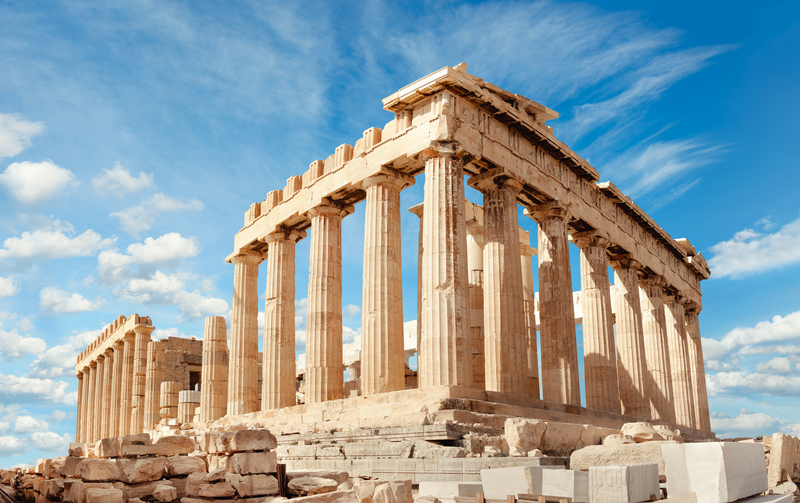
The Acropolis of Athens is the most significant archaeological landmark from ancient Greece, built on a hill in the heart of modern-day Athens, and one of the most known historical Greece landmarks associated with Greek Mythology.
The Acropolis has three historical temples: the Parthenon, the Erechtheion, and the Apteros Nike Temple. The Parthenon was devoted to the goddess of war and the city’s protector, Athena. It was created under the direction of the Athenian sculptor, Pheidias and the architects, Iktinos and Kallikrates.
The Erechtheion is right across the Parthenon and is known as the old temple of Athena. It is the Caryatid Temple, whose six columns are shaped like young girls. It has also been a UNESCO Heritage Site since 1987.
Academy of Athens
The Academy of Athens is a stunning structure constructed in the classical Greek style in the heart of the country’s capital. The Greek National Academy is the country’s leading research institution, with a constitution to pursue scientific research, humanities, and fine arts.
Even though the outside indicates it is as old as Archimedes, the structure was only built in 1926. Theophil Hansen, a Danish architect, created the building. The structure of the Acropolis in the fifth century BC inspired the academy’s architecture.
Mount Olympus
Mount Olympus is Greece’s highest mountain, standing at 2,917 meters, with 52 peaks and deep gorges. It is believed that the 12 mythological Gods built their residence here. In 1938, Olympus was the first landmark in Greece to be designated as a National Park. They create an amazing destination with a rich history, along with the neighboring archaeological site of Dion.
The mountain is suitable for everyone, from beginner hikers to experienced climbers. However, you can only travel and visit between June and September because the weather is unfavorable outside of those months.
Ancient Olympia
The ancient Olympic Games began in 776 BC in Ancient Olympia, built about the 4th century BC, and is recognized as one of Greece’s most important archaeological landmarks. Ancient Olympia is also another significant UNESCO site. The athletic tournament was held in honor of Zeus, the god of the sky and father of Olympia’s 12 gods. Olympia’s huge stadium could hold up to 45,000 individuals.
Unlike other arenas, the Olympia Stadium lacked seats, forcing people to sit on the floor. The Olympics were banned in 393 AD, and the worship of Zeus was forbidden. Most of the ancient structures have been destroyed. However, some ruins remain, especially the remains of the enormous stadium.
Temple of Olympian Zeus
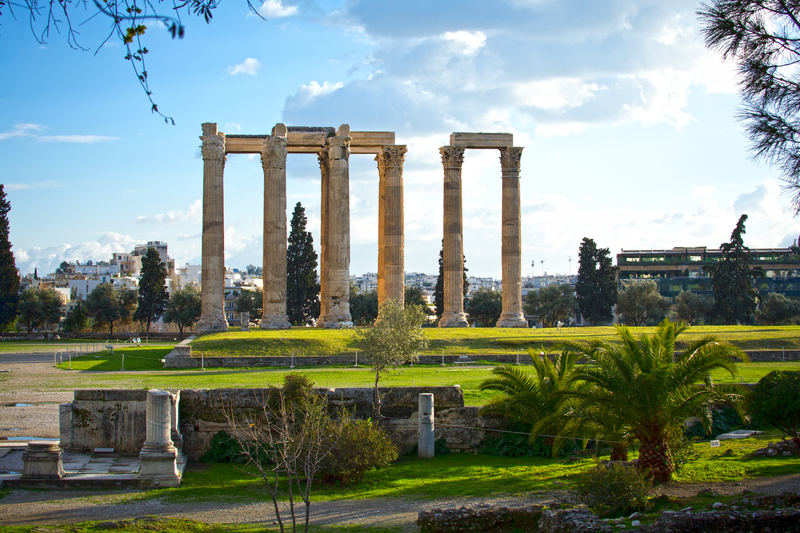
The Temple of Olympian Zeus is the largest temple built in Greece throughout the Hellenistic and Roman periods. Its development began about the 6th century BC, but it wasn’t finished until the 2nd century AD when the Roman emperor Hadrian finished it.
The temple formerly consisted of 104 columns and was devoted to Zeus, the King of Gods. Initially, the location featured a gold-and-ivory Zeus statue. But currently, sixteen of the ancient columns can only be seen, and one of them is on the ground.
Several monuments and historical Greek temples, such as the Temple of Apollo Delphinios and a tiny temple dedicated to Kronos and Rhea, are also preserved. Remains of the gates of the Themistoclean Wall, an ancient wall that surrounded central Athens, are also evident.
Temple of Poseidon
Located at the beautiful Cape Sounio, the Temple of Poseidon is built on a high rock, 60 meters high. It is dedicated to the god of the sea, Poseidon. This ancient temple was built between 444 and 460 BC and is regarded as one of the most important landmarks of Athens’ Golden Age.
It may not be as stunning as the Parthenon. However, the sea in the back that matches the temple’s name adds charm and makes it worth viewing.
Mykonos Windmills
Mykonos windmills are well-known landmarks on the Greek island of Mykonos, which is among the Cyclades islands located in the Aegean Sea. They are placed by the sea, southeast of Chora, and are completely white. They are seven three-story cylindrical buildings with tiny windows and a cone wood roof.
The most known mill is the “Mill of Bonnie,” which is now an Agricultural Museum with various activities. A few of them have also been repaired and are occupied by individuals. The Mill of Geronymos, which functioned until 1960 and still preserves most of its machinery, is still in the greatest condition.
Sanctuary of Delphi
The Sanctuary of Delphi, placed in the heart of mainland Greece, was formerly the residence of the God Apollo and his high priestess, Pythia. It was one of the most prominent Greek temples, and people traveled worldwide to seek wisdom and direction. The spiritual place is no longer as important or spectacular as it once was, yet it still gives you chills.
Delphi’s archeological structure contains two temples, one devoted to Apollo and one to Athena, and other amenities, mostly sporting in nature.
Zakynthos’ Blue Caves
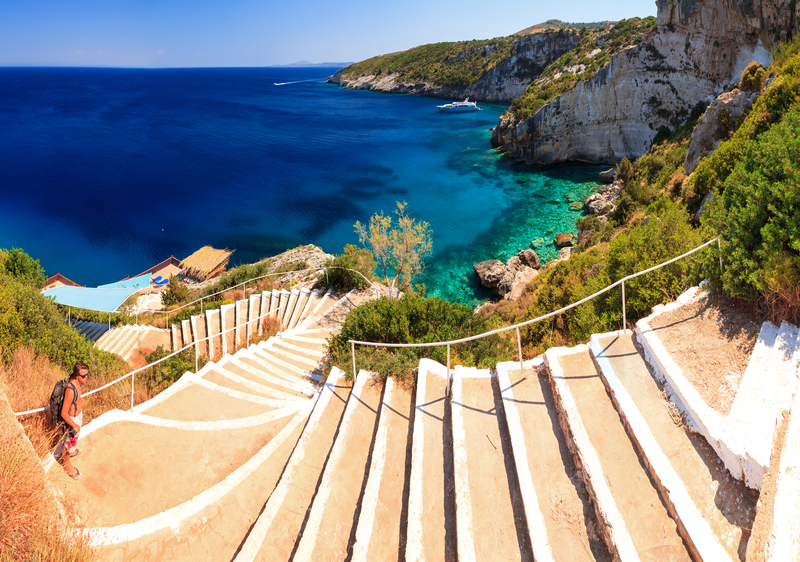
The Blue Caves of Zakynthos provide one of the most breathtaking sea views available anywhere. The beautiful natural limestone formations were found in 1897 and have been shaped by tides for all Zakynthos visitors ever since.
You can hire a boat and sail beneath those magnificent white arches. The river’s reflection gives a blue hue to the caves as you sail beneath the arches. The Blue Caves are located in Zakynthos within the Ionian Sea and can be visited via Agios Nikolaos Port.
Elafonissi Beach
Most of the beaches in Greece are of such great quality that they necessitate something remarkable to be designated as a national landmark. One of these beaches is Elafonissi Beach.
Elafonissi Beach, located on the Greek island of Crete, is one of the beautiful beaches that welcome guests with pink sands rather than golden or white and crystal-clear waters. This unique phenomenon is created by pink corals that, over time, transform into the sand, creating Elafonissi, Greece’s most unusual beach vacation destination.
While wandering around the beach, you will see a variety of flowers and plants, as well as lizards and other wildlife. Sea turtles and seals have been spotted in the vicinity occasionally.
Epidaurus Ancient Theatre
The Ancient Theatre of Epidaurus in the Peloponnese is a world-renowned Greek site famous for its excellent acoustics. The Epidaurus theatre, which seats 13,000 people, was established in 340 BC to honor Apollo’s son and the god of medicine, Asklepios.
The acoustics were highly advanced for the time, allowing people in the audience in the back rows to hear performers on stage without amplifying devices. The limestone seats, which may reduce low-frequency interferences while reflecting high-frequency sounds from the stage, are responsible for the outstanding acoustics.
Visitors can now visit the ancient landmark throughout the day. The old theatre hosts shows and music events during the summer. You should go if you have a chance because the location is magnificent.
Conclusion
Although Athens is the capital of Greece, it’s not the only city worth exploring. Check out these locations if you’re a woman over 50 looking for some of the most famous Greek landmarks. From ancient ruins to stunning beaches, there’s something for everyone on this list. Have you visited any of these attractions? What was your favorite place?
Support the Team!
If we helped you plan your travels in any way and you want to support us, here are several companies we’re affiliated with. We receive a small commission at no extra cost to you when you click on the links below so feel free to click away!







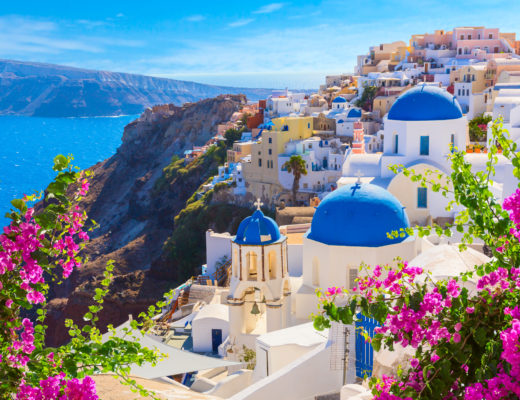
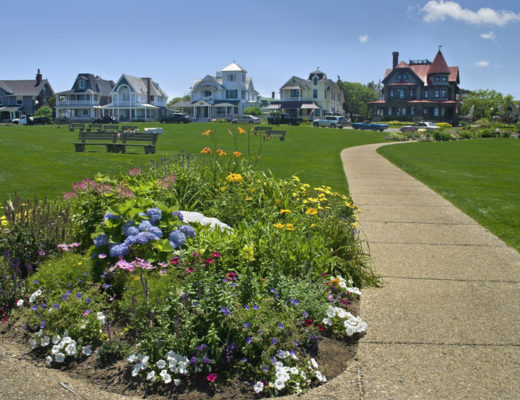

No Comments